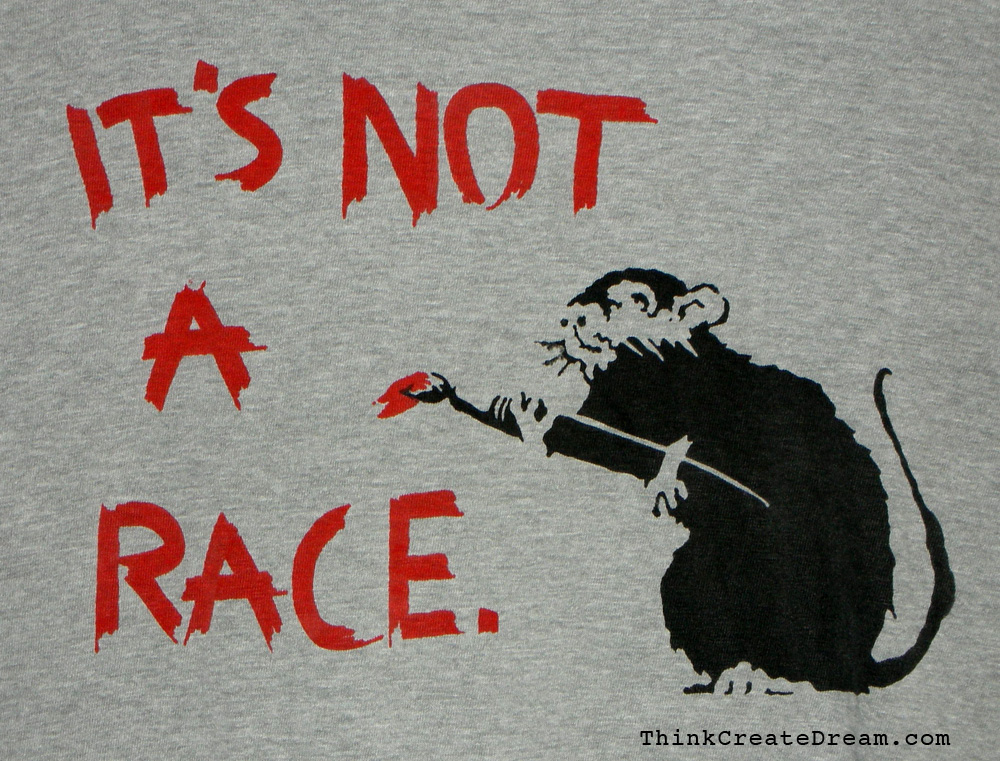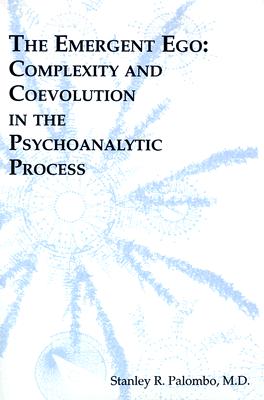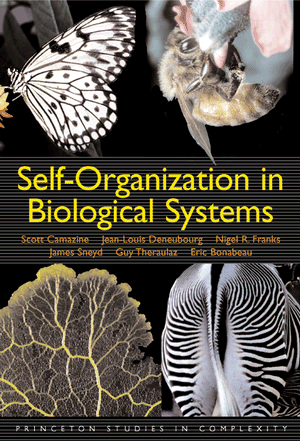 In my book on psychoanalysis and the environmental crisis (especially part three) I include a reflection of the psychological function of the animal from fairy tales to horror films, pets to animal phobias, ideology and human-nature relationships. I explore this in the context of emerging ecological relations, which develop alongside object relations and narcissistic relations, and human culture's relationship to the non-human world of nature. This is framed within an psychoanalytic, group analytic, ecological and Deleuze-Guattarian (becoming-animal) perspective.
In my book on psychoanalysis and the environmental crisis (especially part three) I include a reflection of the psychological function of the animal from fairy tales to horror films, pets to animal phobias, ideology and human-nature relationships. I explore this in the context of emerging ecological relations, which develop alongside object relations and narcissistic relations, and human culture's relationship to the non-human world of nature. This is framed within an psychoanalytic, group analytic, ecological and Deleuze-Guattarian (becoming-animal) perspective.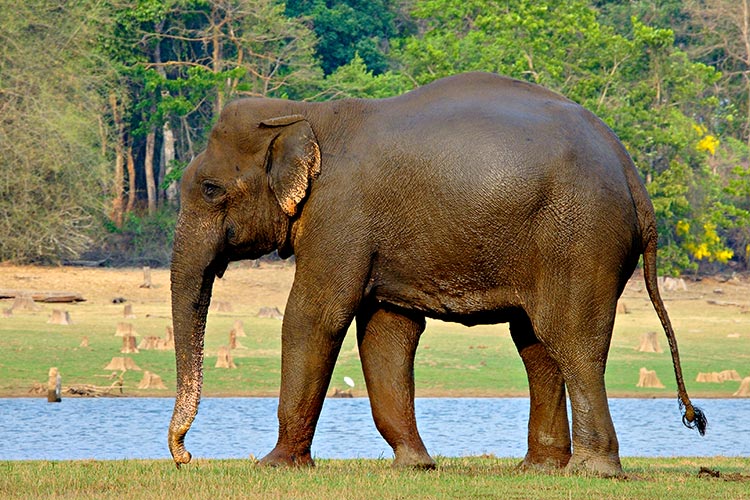 Below is an fascinating article I have just discovered from Volkan, an expert on 'large-group' dynamics, exploring the function of the animal in the context of national and group symbolism. This would fit within Deleuze and Guattari's tripartite classification of animals into: 1. Oedipal (individuated, pet) animals, 2. State (mythic) animals, 3. Pack (wild, nomadic) animals.
Below is an fascinating article I have just discovered from Volkan, an expert on 'large-group' dynamics, exploring the function of the animal in the context of national and group symbolism. This would fit within Deleuze and Guattari's tripartite classification of animals into: 1. Oedipal (individuated, pet) animals, 2. State (mythic) animals, 3. Pack (wild, nomadic) animals.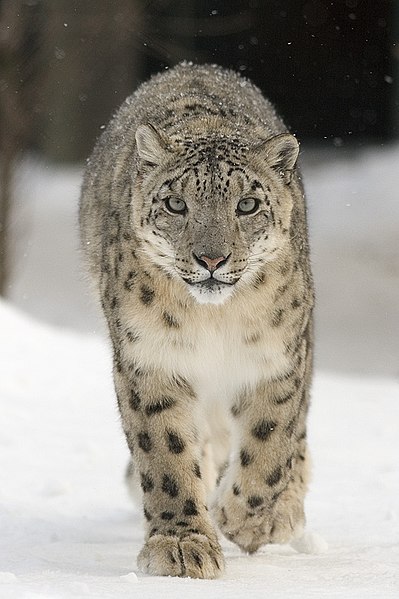 Volkan's discussion focuses on the second (State/mythic animals). We can think here of animals such as the Afghan snow leopard or the Indian Elephant, tiger or cobra, but also how these animals are used also by opposing groups (to attack, denigrate or demonise the animal-other, representing the alien group-other). Of course, many of these group animals are not 'chosen' by the group, but attributed by their enemies (eg. the attribution of jews as rats, or Tutsi's as cockroaches during their respective genocides). This symbolism can also be resisted and reused, such as in Banksy's use of rats in his graffiti, the US Republican Party's use of the elephant, and the various competing national lions and eagles. The various roles of such animals can lead to further understanding about the intersection between mental ecologies, social ecologies, and natural ecologies.
Volkan's discussion focuses on the second (State/mythic animals). We can think here of animals such as the Afghan snow leopard or the Indian Elephant, tiger or cobra, but also how these animals are used also by opposing groups (to attack, denigrate or demonise the animal-other, representing the alien group-other). Of course, many of these group animals are not 'chosen' by the group, but attributed by their enemies (eg. the attribution of jews as rats, or Tutsi's as cockroaches during their respective genocides). This symbolism can also be resisted and reused, such as in Banksy's use of rats in his graffiti, the US Republican Party's use of the elephant, and the various competing national lions and eagles. The various roles of such animals can lead to further understanding about the intersection between mental ecologies, social ecologies, and natural ecologies. Of course, there are major problems with this, do animals (or 'nature') have any real status beyond being carriers of human symbolic meaning? Are they just a backdrop for our projections? A tapestry to weave our dreams? What happens when the powerful symbolism of the tiger or the rhino lead them towards extinction as we use their body parts to for ineffective cures for everything from cancer to impotence. This is an issue I explore in more detail in part three of my book, The Ecology of Phantasy, in the context of Deleuze and Guattari's critique of Freud's approach to the Wolfman's dream (see also Freud's Bestiary: How Does Psychoanalysis Treat Animals? Genosko 1993). Nevertheless, whether we like it or not, we do use animals in this way, and they form an important part of the ecological imaginary, and Volkan's article is a good starting point to take this further.
Vamık D. Volkan
Many
national or ethnic groups’ identities are represented by animal
symbols. For example, the lion symbolizes British collective identity,
while Turks consider the gray wolf their national symbol. This
phenomenon goes back to the beginnings of human history-people have
always linked their own valued or feared characteristics, and attempted
to divide and order experience, through the symbolic and totemic use of
animal and plants in their environment.
The
symbolic significance of animals is sometimes obvious and primal, such
as those associated with fertility, warfare, wisdom, or specific
behaviors, while in other cases animals are used as symbols for complex
and abstract ideas and beliefs. Some primitive people collectively
believed, for example, that an omnipotent lion of the heavens swallowed
the sun and thereby brought on darkness each day (Biedermann, 1992). In
ancient Egypt, Sekhmet, the goddess of war and defender of the sun god
Re, was represented by a lion, and in Judeo-Christian tradition, the
lion symbolizes both divine and evil power. The wolf has symbolic
significance in Old Norse mythology, as well as in the ancient
civilizations of Greece, Rome, China, and numerous other cultures,
tribes, and ethno national groups. The Turks’ use of the wolf dates back
thousands of years to their early history in the steppes of Central
Asia.
In
some cases the original significance of an ancient animal symbols
within a large group or ethno national collective is difficult to
pinpoint. In others, a certain animal was adopted by a leader and
thereby elevated or resurrected as a unifying symbol. “Genghis Khan … claimed to be descended from a blue-gray ”chosen wolf” which itself was sired by the sky (Tenggri)” (Biedermann, 1992, p.387). Adolf Hitler’s fascination and identification with a wolf also has been documented: “As a boy, he had been pleased to find that his given name was derived from the Old German ”Athalwolf” meaning noble “wolf” (Ehrenreich, 1997, p.212). Hitler named his favorite dog “wolf” and generalized his identification with this predator by calling the SS his “pack of wolves.” At
times, he also believed that the German people followed him because
they realized that “now a wolf has been born” (Waite, 1993, p.26).
Animals and other symbols in modern times also have come to represent large-groups through conventional agreement. A country’s animal and the symbols displayed on its flag are often chosen through a vote or general consensus, as are the birds and flowers of each state in the US. Sometimes such choices are the subject of intense debate, competition, and rivalry. But even when the process of such selections assumes seemly irrational proportions—indicating that large-group symbols are psychologically powerful things—in the end, like a red octagon that symbolizes “stop” the relation between signifier and signified is clear.
In psychoanalysis, however, the concept of a symbol has a narrower meaning and focuses on how it originates in the unconscious. In The Interpretation of Dreams (Freud, 1900), and in his many other writings that followed, Freud understood symbols as a means of reducing anxiety by repressing unacceptable wishes or other derivatives of instinctual drives. An individual is aware of the symbol itself, but unaware of what is symbolized. If someone dreams of a snake, for example, he sees an actual image of a snake, but the penis that the snake may represent is not consciously perceived. Initially, Freud believed that symbols representing body parts, body functions, birth, death, sexuality, and childhood intimate objects and relationships with parents and siblings are universal and are included in a kind of system of phylogenetic meaning. Such a belief “has now been largely replaced by the assumption that the recurrence of such symbols across cultures has to do with the similarity of human beings’ experiences and interests from infancy onward and of the cognitive processes involved in symbol formation” (Moore and Fine, 1990, p.192).
Humans
therefore share the need to use animal and other symbols and many are
cross-cultural. Yet this generality is concurrent with specificity in
regard to the symbols used by large groups. Neighboring groups typically
do not have the same animal symbol, even if they share many other
historical, religious and linguistic characteristics. When large groups
do share a symbol such as the lion, one ethno national group’s lion has
minor or major differences from another large group’s lion, and members
may adamantly defend and justify the use of a lion to specifically
symbolize their exclusive group identity.
 Many
perspectives, including those of anthropologists, archaeologists,
historians, sociologists, political scientists and others, are
consequently needed to understand the origins, evolution, and
perpetuation of animals’ symbols and their use by groups of people to
define collective identity and other beliefs. Psychoanalytic approaches
are useful as well in comprehending the complex and intertwined
relationship of mankind’s internal and external world that we find
expressed in animal symbols.
Many
perspectives, including those of anthropologists, archaeologists,
historians, sociologists, political scientists and others, are
consequently needed to understand the origins, evolution, and
perpetuation of animals’ symbols and their use by groups of people to
define collective identity and other beliefs. Psychoanalytic approaches
are useful as well in comprehending the complex and intertwined
relationship of mankind’s internal and external world that we find
expressed in animal symbols. For example, while psychoanalytic insights alone may not help us understand why a certain large group chose a specific animal symbol thousands of years ago, and what it consciously and unconsciously represented, they can more clearly explain how and why children in a given large group attach themselves to shared symbols and make them an extension of their internal worlds. Volkan (1988, 1997, and 1999) studied this phenomenon through his concept of suitable reservoirs of externalized self and object images, which is useful in outlining the pre-oedipal beginnings of large-group identity.

For practical purposes, during the course of normal development, a child integrates his sense of self around the age of 36 months and develops his core individual identity. This integration, however, is not a total process. Some images of the self as well as internalized objects, both “good” (libidinal determined) and “bad” (aggressively determined), remain unintegrated at this early age. Because these unintegrated images threaten to destabilize the established core identity, they must be disposed of.
The child utilizes many ways of dealing with unintegrated self and internalized object images and an emotion attached to them (Kernberg, 1976; van der Waals, 1952), and employs many mechanisms ranging from splitting and denial to repression for this purpose. Among the spectrum of mechanisms, those of externalization are critical and ubiquitous. The caretakers in the child’s environment consciously and unconsciously direct the child to externalize his or her unintegrated self and internalized object images onto certain items in their environment. These items already have been accepted by the caretakers as amplifiers of their own cultural, ethnic, or national sentiments, such as a horse and cowboy hat for an American boy. They become suitable reservoirs to absorb children’s externalized and unintegrated “good” images. Unintegrated “bad” images are externalized onto other items, often those that belong to “others” or enemies.
When one large group’s animal symbol becomes a “good” suitable reservoir for all children belonging to this large group, it creates an invisible network that links the children together. “Good” suitable reservoirs—whether they are animal symbols or other items—become a large group’s marker without children being aware of this process.
Suitable
reservoirs, although they bear some resemblance to transitional objects
(Winnicott, 1953), belong to a different phase of life and have
different functions. The latter is chosen by the child himself or
herself and has a specific meaning only for that child. Suitable
reservoirs are offered to children by adults belonging to a specific
large group and become the foundation on which more sophisticated
ideations and affects concerning ethno national identity and large-group
belonging will be built. It goes without saying that, as children of
the same large group grow, they also attribute more sophisticated
meanings to their animal symbols and such meanings are condensed into
the original function of the suitable reservoir.
Large-group animal symbols which are used as childhood suitable reservoirs have intimate relationships within all children’s, as well as adult’s, internal worlds. Therefore, when a large group regresses (Loewenberg, 1995), individuals may experience large-group animal symbols as “protosymbols” (Werner and Kaplan, 1963)—as if they are one’s large-group identity. Thus, any attack on an ethnic, national, or religious group’s animal symbol (as well as other symbols which originate as suitable reservoirs) is perceived by those belonging to that large group as personal attacks damaging their large-group identity.
During the Cold War period, for example, Americans and the Soviets exhibited exaggerated emotional investment in their respective animal symbols. The enemy’s symbol was either devalued or rendered dangerous while one’s own large-group symbol was invested with idealism. Americans characterized the Russian bear as a vicious, devouring, castrating, or murdering animal, while Soviets portrayed the American eagle as representing a combination of maliciously carnivorous and greedy morality with exhibitionistic phallic activity. Such depictions invoked anger and were considered deeply offensive by the respective sides.
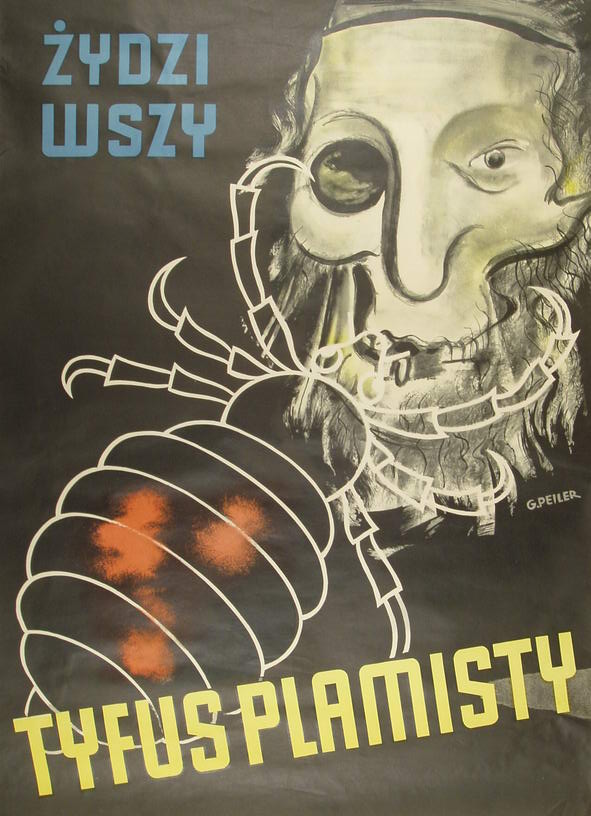
Animal symbols are also used in a pathological way to dehumanization an enemy (Bernard, Ottenberg, and Redl, 1973) during war or war like situations. In such cases, one large group regresses and begins to utilize protosymbols of the enemy as their shared “bad” suitable reservoir (Volkan, 1997, 1999). First, the enemy is demonized but still is perceived as retaining human qualities, although they are predominantly negative human qualities. Later, those of an enemy group may be rendered as vermin or a loathsome animal that must be exterminated, or a cancer that must be excised “for the sake of humanity.” In Rwanda, Hutu first referred to Tutsi as evil people and later began calling them "cafards," meaning cockroaches (de Swaan, 1996).
Many readers also may recall reports of symbolic dehumanization associated with the Iraqi invasion of Kuwait, and the behavior of Iraqi troops in Kuwaiti City’s zoo. With no one to feed or care for the animals displayed there, many suffered terrible deaths, or were believed to have been eaten by Iraqi soldiers. These stories were prevalent among Kuwaitis after the war, and reflected their belief that the Iraqi soldiers were less like humans and more like savage and predatory animals. Conversely, other stories involved reports that Iraqi soldiers locked some Kuwaiti women, whom they had raped, in empty zoo cages and exhibited them naked as if they were animals.
On the other hand, a regressed large group may utilize animal symbols in a reparative or adaptive rather than destructive way. For example, Cypriot Turks chose parakeets as a “good” suitable reservoir (Volkan, 1976, 1988), during the tumultuous period following Britain’s withdrawal from the island in 1960. Although independence brought hopes for a new future, Cypriots continued to consider themselves either Greek or Turkish, and within three years a bloody conflict broke out between the two groups. Between 1963 and 1968, Cypriot Turks were forced to live in increasingly small enclaves that became more like prisons or ghettos. During this traumatic period of their history, they raised hundreds and hundreds of parakeets, whose cages hung everywhere—at homes, at grocery stores, at coffee shops. The Cypriot Turks were preoccupied with the birds and obsessively kept track of which ones were fertile, which was the mother of other birds, which one was crippled, and so on.
Originally the birds symbolized the victimized, imprisoned Turks—by externalizing their “bad” aspects, the people could tolerate living in subhuman conditions. But Cypriot Turks went one step further, and by giving the parakeets positive attributes they turned these symbols into “good” suitable reservoirs. The parakeets came to represent their hopeful, good parts—as long as the birds were fertile and sang happily, Cypriot Turks unconsciously felt assured that they themselves could survive imprisonment.
In 1968, the political situation on the island changed with the intervention of Turkish troops, and Cypriot Turks could leave their enclaves. The utilization of birds as suitable reservoirs ended and parakeets, which are not native to the island, also disappeared, although some continued to be kept as ordinary pets. This brief example and the others mentioned here indicate that animals figure prominently in the relationship between human’s inner and outer worlds, and such themes will be further explored in this volume.
REFERENCES:
1- Bernard, W.W.; Ottenberg, P., and Redl, F. (1973.) Dehumanization: A Composite Psychological Defense In Relation To Modern War. In Sanctions of Evil: Sources of Social Destructiveness, (Eds.), N. Sanford, and C. Constock, pp.102-124. San Francisco: Jossey-Bass.
2- Biedermann, H. (1992.) Dictionary of Symbolism: Cultural Icons and the Meaning Behind Them, tr. J. Hulbert, New York: Facts on File.
3-
de Swaan, A. (1996.) Widening Evils of Disidentification: On the
Psycho-and Socio-genesis of the Hatred of Distant Strangers: Reflections
on Rwanda. Paper
presented at Civilization and Its Enduring Discontents:Violence and
Aggression in Psychoanalytic and Anthropological Perspective meeting. Bellagio, Italy, September 4.
4- Ehrenreich, B. (1997.) Blood Rites: Origins and History of the Passions of War. New York: Metropolitan Books.
5- Erikson, E.H. (1956.) The Problem of Ego Identification. Journal of the American Psychoanalytic Association, 4:56-121.
6- Freud, S. (1900.) The interpretation of dreams. Standard Edition, 4 and 5. London: Hogarth Press,1961.
7- Howell, W.N. (1995.) “The Evil That Men Do…” Societal Effects of the Iraqi Occupation of Kuwait. Mind and Human Interaction, Vol.6:150-169.
8- Kernberg, O.F. (1976.) Borderline Conditions and Pathological Narcissism. New York: Jason Aronson.
9- Loewenberg, P. (1995.) Fantasy and Reality in History. New York: Oxford University Press.
10- Moore, B.E., and Fine, B.D. (1990.) Psychoanalytic Terms and Concepts. New Haven: American Psychoanalytic Association and Yale University Press.
11- Saathoff, G.B. (1995.) In the Halls of Mirrors: One Kuwaiti’s Captive Memories. Mind and Human Interaction, Vol.6:170-178.
12- Saathoff, G.B. (1996.) Kuwait’s Children: Identity In the Shadows of the Storm. Mind and Human Interaction, Vol.7:181-191.
13- van der Waals, H.G. (1952.) Discussion Of the Mutual Influences In the Development of Ego and Id. In Psychoanalytic Study of the Child, 7:18-19.
14- Volkan, V.D. (1976.) Cyprus—War and Adaptation. Charlottesville, VA: The University Press of Virginia.
For more of Volkan's writings, see: http://www.vamikvolkan.com
